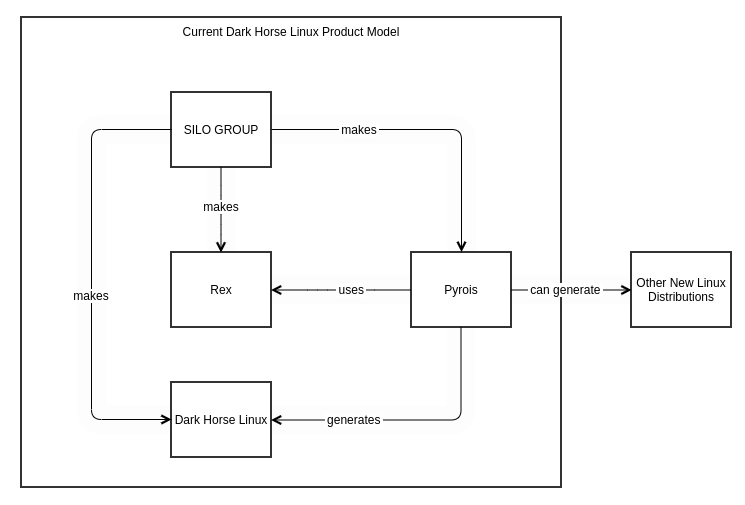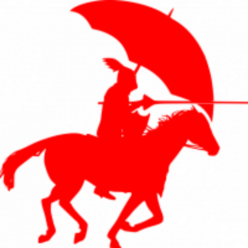After a great deal of thought, I’ve decided to fork Pyrois. The new project is called Cyrios.
Cyrios will be kept under the SILO GROUP umbrella and not the Dark Horse Linux Project space. Its source code is available at:
https://source.silogroup.org/SILO-GROUP/Cyrios
I will at a later date set up a downstream mirror on github.
Pyrois will continue to be part of the Dark Horse Linux Project and will remain where it is, but will be specialized to produce Dark Horse Linux images.
For those of you who are visual thinkers, this is the current state of the project structure:

And this is the future state of the project structure:

The reason why I’ve decided to fork my own project is a bit nuanced, but in essence, the goal of Pyrois is both important to me and limiting of its utility to the Dark Horse Linux Project at the same time. This solves both angles.
Here are the highlights:
- Pyrois was successful in providing a way to build a non-specialized ISO image for someone to be able to extend to create a new Linux distribution image to just about any configuration imaginable. It’s supposed to be a “generic distribution factory” that doesn’t make too many assumptions about what you want to build beyond a standard source-based system that is cross-compiled from raw sources. While there are many projects that will produce a linux image, I’m not aware of any that do not provide a highly specialized system beholden to upstream project interests with large sponsors behind them.
- Pyrois is currently used by Dark Horse Linux to create its images. Now that Dark Horse has reached a certain level of maturity in planning, I need to extend Pyrois to be specialized to generate the Dark Horse Linux image, and specifically an installer ISO.
- I didn’t want to destroy Pyrois’ current facilitation of distribution genesis by just specializing it to DHLP, so I’m forking it to a new project called Cyrios to serve that function.
- Cyrios won’t be able to get as many resources as Pyrois, so, I’m expecting it to largely stay out of date but to provide a base on which others can build by refreshing it using the LFS documentation.
- This will pave the way for a more developed DHLP image and eventually an installer image.
